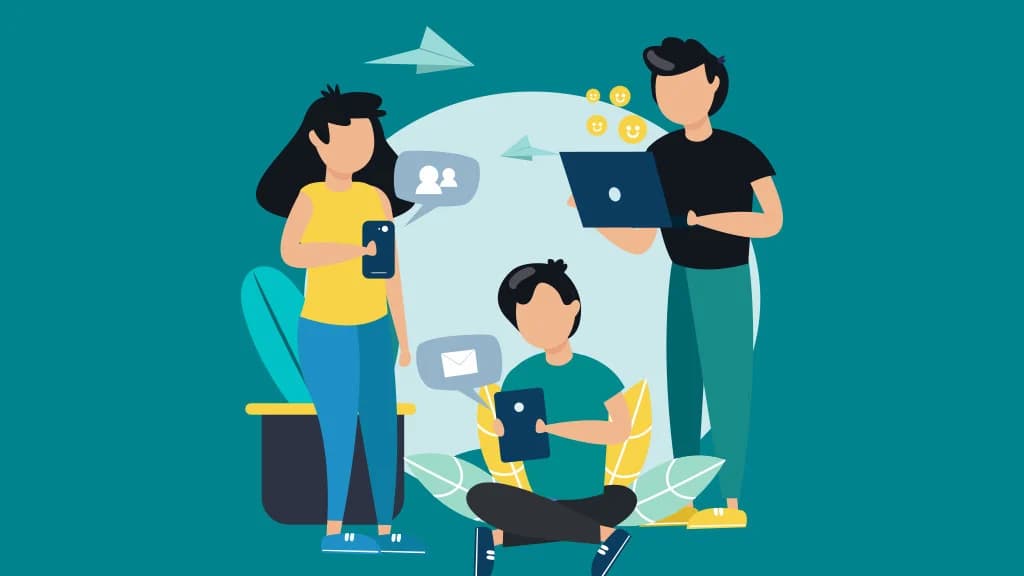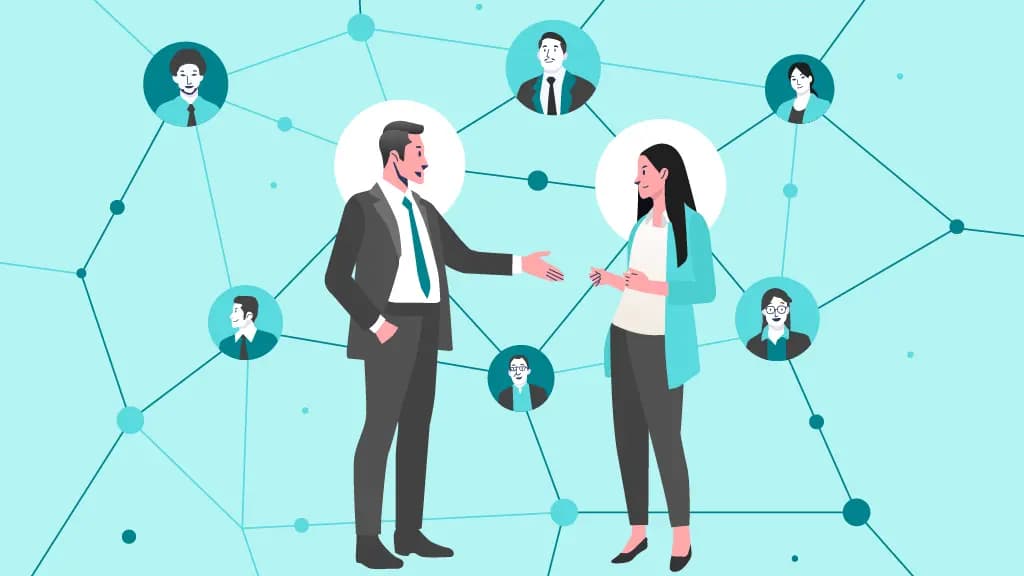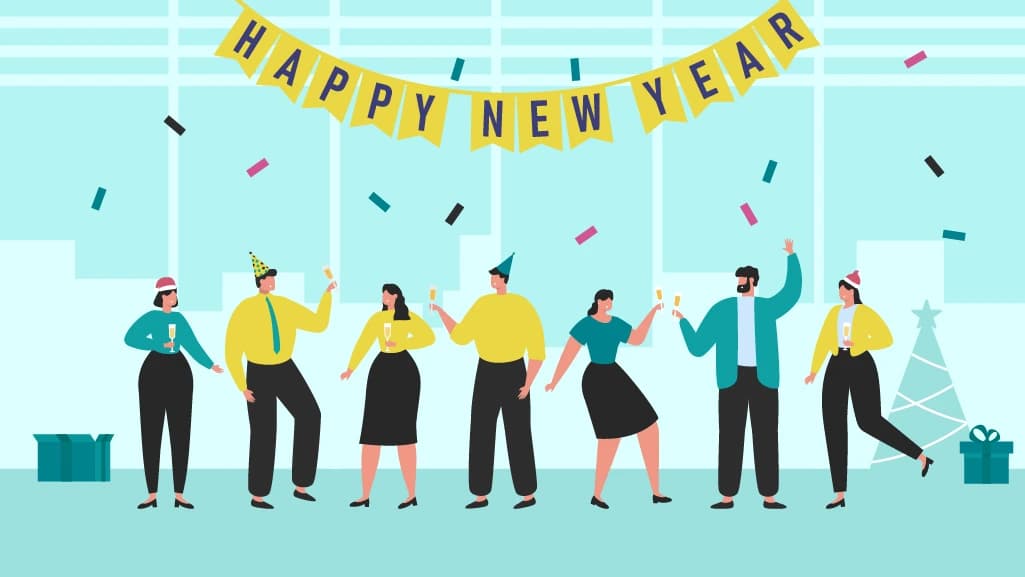12 Strategies to Engage Millennials and Gen Z at Workplace

Team AdvantageClub.ai
November 17, 2025

Today’s corporate world requires employee engagement efforts to achieve business growth since it is no longer just a passing trend. Workforces today are saturated by Generation Z and millennial employees who approach work in distinctive ways. Companies that want to develop motivated teams must understand the core factors that drive Generation X and their younger cohorts. This blog demonstrates practical methods for interacting with these two workforce segments and developing an empowering workplace setting for better output. Businesses that connect their organizational approaches to team values and aspirations achieve sustainable growth while nurturing an environment where employees experience inspiration and worth.
The Basics: Millenials and Gen Z
An analysis of these two generations must be conducted before implementing engagement strategies. The period from 1981 to 1996 created an environment of technical revolution during which Millennials matured. They seek employment where they receive attention to personal life needs and experience meaningful daily work and career advancement possibilities. Work motivation for Millennials requires open communication lines and helpful feedback that leads to recognition from management
Gen Z, born between 1997 and 2012, is the first generation to grow up entirely in the digital age. They expect workplaces to be technologically advanced, inclusive, and adaptable. Unlike Millennials, they emphasize work-life integration rather than balance and prefer frequent, real-time feedback. The organization makes diversity, inclusion, and equity their essential values, reducing barriers for all members.
Each work group acknowledges flexibility and meaningful work but holds different points of expectation. Knowledge about these generational differences enables businesses to design workplaces that trigger two distinct age groups to actively participate while feeling respected and driven to enhance organizational outcomes.
Key Differences
The similar characteristics between Millennials and Gen Z do not translate into equivalent work expectations or engagement requirements between the two generations. Millennials’ workplace values prioritize group collaboration with sustained professional growth, whereas Gen Z members prioritize self-reliance and quick professional advancement. Various preferences between the two generations require organizations to establish advanced employee engagement and retention plans.
| Feature | Millennials | Gen Z | Impact on Engagement |
|---|---|---|---|
| Collaboration Style | Team-oriented, value group work | Independent, prefer self-driven tasks | Millennials thrive in teamwork; Gen Z prefers autonomy. |
Career Goals | Seek career stability and steady progression | Prefer fast growth and career mobility | Millennials need structured career paths; Gen Z looks for quick advancement. |
| Feedback Preferences | Encouraging, constructive feedback | Honest, direct feedback | Millennials appreciate supportive feedback; Gen Z values clear, no-nonsense communication. |
| Communication Style | Comfortable with email, meetings, and messaging | Prefer real-time communication and efficiency | Millennials balance digital and face-to-face; Gen Z prefers fast, digital interaction. |
| Work-Life Approach | Maintain work-life balance, value personal time | Blend work and personal life seamlessly | Millennials want flexibility; Gen Z seeks full integration of work and life. |
| Technology in Workplace | Adaptable to new technologies | Expect workplaces to be tech-forward | Millennials adjust to tech changes; Gen Z demands cutting-edge digital tools. |
| Company Loyalty | Stay longer if satisfied | More likely to explore new opportunities | Millennials value stability; Gen Z prioritizes growth and fresh experiences. |
| Purpose-Driven Work | Aligns with personal values | Essential, driven by social impact | Both generations seek meaning, but Gen Z is more motivated by social responsibility. |
| Recognition & Rewards | Enjoy frequent recognition and feedback | Prefer immediate, personalized appreciation | Both need validation, but Gen Z expects faster and more tailored recognition. |
| Diversity & Inclusion | Important for workplace culture | Non-negotiable, expect inclusivity | Both value DEI, but Gen Z actively demands and expects action. |
| Learning & Development | Seek continuous learning opportunities | Prefer rapid skill-building | Both generations value development, but Gen Z favors fast, hands-on learning. |
| Flexibility at Work | Appreciate flexible schedules | View flexibility as a necessity | Both benefit from flexibility, but Gen Z sees it as a core requirement. |
| Leadership Style | Prefer supportive, communicative leaders | Expect transparency, authenticity, and empowerment | Both need strong leadership, but Gen Z demands more openness and direct involvement. |
Employee Engagement for Millennials and Gen Z
Every organization depends on motivated employees for its achievements. Engagement for Millennials and Gen Z means more than job enjoyment because they seek to align their values and mission with their company. Employees who genuinely feel engaged offer better contributions because they generate innovative approaches and foster a favorable workplace environment.
-
Business Impact:
An organization benefits from engaged teams because they function at higher productivity levels, generate innovative solutions, and demonstrate extraordinary dedication to business expansion. Employees who appreciate their worth stay with the company, thus decreasing employee turnover expenses associated with new hiring. A competitive business environment advantages organizations because engaged employees help develop good performance standards and organizational loyalty.
-
Retention and Productivity:
The link between engagement, retention, and productivity is undeniable. Employees who feel supported and appreciated are likelier to remain loyal and perform at their best. For Millennials and Gen Z, this means providing an environment that encourages personal growth, recognizes their contributions, and offers meaningful work. Organizations that meet these expectations will see more substantial commitment and long-term success.
How to Engage Millennials in the Workplace
- Flexible Work Arrangements:
Flexible work options emerged as the key method that attracts millennial professionals to the labor market. Work-related flexibility for employees includes remote work possibilities, flexible scheduling options, and work-life balance facilitating policies. Workplace satisfaction and commitment among millennials increase as they implement personal schedule choices to oversee their working hours and allocate time for their individual needs. - Career Development Opportunities:
The success of millennials depends on professional development opportunities in their work environment. Organizations that provide training sessions, workshops, mentorship services, and structured advancement routes will substantially increase the motivation level of employees. By investing in their personal growth, the organization demonstrates enduring career commitment that strengthens employee dedication and company retention. - Purpose-Driven Work:
Millennials demonstrate better workplace engagement when a workplace allows employees to connect their work efforts to meaningful causes. These employees will pursue employment opportunities at organizations that uphold their ethical principles and make a social impact. Leadership that promotes the organizational mission and allows community engagement enhances employee motivation because these programs foster personal purpose at work. - Recognition and Rewards:
Recognition of millennial employee work performance is vital for maintaining their commitment. A feedback system that often runs with recognition schemes and individualized rewards creates an appreciation for their valuable work. Employee recognition through casual acknowledgment and official recognition rewards improves workplace spirit and commitment to outstanding work.
How to Engage Gen Z in the Workplace
- Technology and Innovation:
Gen Z members have been technologically inclined since they matured during the digital revolution. Employees of this generation anticipate their employers will maintain technological leadership and establish environments of innovation. Employees’ engagement depends on offering needed digital resources to perform efficiently and maintaining an environment supporting technological innovation and creative problem-solving. - Diversity, Equity, and Inclusion (DEI) Engaging Gen Z in the workplace:
considers inclusivity more than just a marketing term because they seek it as a fundamental aspect of their workplaces. The workplace environment they seek has both formal DEI initiatives and a genuine respect for each individual across all demographics. Organizations that adopt DEI policies that incorporate inclusive recruitment and diversity education and specialized support networks for marginalized groups, will support Gen Z employees in developing a workplace connection that will lead to higher workplace engagement. - Immediate Feedback and Growth:
The members of the Gen Z generation require persistent feedback as well as timely answers to their inquiries. Gen Z employees feel confident when they receive precise feedback about their position, and they desire to identify their strong points and weak areas. The delivery of steady feedback from managers must be valuable and purposeful for professional development purposes. Clear paths to career advancement alongside available promotions in the workplace keep young employees highly motivated and dedicated to their functions. - Work-Life Integration:
Gen Z members combine work and personal life as one unified experience instead of maintaining separate work-life balance. These employees value flexible time management systems because this approach enables them to combine their personal pursuits with their occupational obligations. Workplace flexibility combined with remote work solutions and wellness programs helps Gen Z integrate their professional and personal commitments, boosting their work satisfaction and commitment.
Universal Strategies to Engage Gen Z & Millennials
- Communication and Collaboration:
An open environment and collaborative practices are essential to attracting millennials and Gen Z members. These two generations respond best to clear communication channels, which help them perform better. The team retains effective collaboration through regular updates, easy feedback resources, instant messaging, and project management systems. Widespread teamwork and knowledge exchange maintain an attractive, dynamic workplace atmosphere for both generations. - Wellness Programs:
Employees need complete wellness support to feel engaged at work. Millennial and Gen Z employees prioritize personal well-being above all else. The organization manifests its dedication to employee health by offering wellness for fitness programs, stress management, and mental health support. Integrating wellness challenges, yoga sessions, or mental health resources into the work environment fosters a sense of care that increases engagement and productivity. - Corporate Social Responsibility (CSR):
Millennials and Gen Z are highly attracted to companies with a positive social impact. Incorporating Corporate Social Responsibility (CSR) initiatives into the workplace gives them a sense of purpose. These generations are eager to be part of organizations that contribute to the greater good. Encouraging participation in community service, sustainability programs, or social causes allows them to align their personal values with the company’s mission, strengthening their emotional investment. - Leadership and Management:
Leadership plays a pivotal role in engaging younger generations. A leadership style that is transparent, approachable, and supportive can create an environment where employees feel valued. Regular constructive feedback, acknowledging achievements, and offering opportunities for career growth help build trust between leaders and their teams. When leadership is committed to fostering talent and maintaining open lines of communication, it boosts morale and drives overall engagement in the workplace.
Implementing and Measuring Employee Engagement Strategies
Action Plan
You’ll need to create a well-structured action plan to successfully implement the strategies discussed. Here’s how you can get started:
- Evaluate Current Engagement Levels:
Each initiative must start with evaluating employee engagement levels in your organization. You should conduct surveys, interviews, and focus groups to obtain data from all your employees. - Pinpoint Areas for Improvement:
After assessing the data, highlight the areas that need the most focus. This could be anything from communication practices to career development opportunities. - Create a Detailed Action Plan:
Create an actionable pathway with specific job responsibilities and designated timeframes for every planned measure. The systematic approach will help maintain clarity and realistic attainability for your strategy. - Share the Plan with Employees:
You should disclose your prepared plan to your team members. A transparent approach must be followed during this phase since you need feedback from team members to ensure everyone understands the scheduled changes. - Roll Out Initiatives and Track Progress:
The implementation phase begins together with scheduled checks for measuring changes in outcomes. Implementing strategies requires organizational leaders to adapt their plans through feedback reception and continuous observation of the work environment.
Metrics and KPIs
To measure the effectiveness of your engagement strategies, track the following metrics:
- Employee Satisfaction:
Regular surveys or feedback sessions can help gauge employees’ satisfaction with their work environment. - Employee Retention:
Monitor retention rates to evaluate if your engagement initiatives positively influence long-term commitment. - Productivity Levels:
Engaged employees often show higher productivity. Keep an eye on individual and team performance to assess engagement impact. - Engagement Scores:
Use engagement surveys to understand your employees’ level of involvement and enthusiasm toward their work. - Recognition and Feedback:
Track how often employees are recognized and receive constructive feedback. Positive reinforcement is key to keeping engagement high.
Continuous Improvement
Engagement isn’t a one-time event. It’s a continuous process that requires ongoing evaluation and refinement. Regularly revisit your strategies based on feedback, analyze results, and be open to making necessary adjustments. Cultivate a workplace where employees feel encouraged to contribute ideas for improvement.
Engaging across generations
Today’s organizations need to understand how to engage millennials in the workplace and how millennials and Gen Z workforce members differ from each other to successfully engage both groups in their global workplaces. These employee groups require adaptable work arrangements, individual recognition, career space, and purposeful employment opportunities. Organizations create an environment that motivates employees by implementing initiatives based on these generational preferences.
Producing customized engagement programs that incorporate flexible working times and achievement recognition options and match individual values and career advancement openings leads to significant improvements in employee contentment. Purpose-driven work, where employees can see the direct value of their contributions, also plays a key role in keeping them engaged.
While traditional methods still hold value, integrating technology that helps streamline these efforts, such as platforms that provide real-time feedback and sentiment analysis, can enhance these initiatives. By adapting strategies to meet the evolving needs of millennials and Gen Z, companies ensure a thriving and engaged workforce, leading to long-term success.





